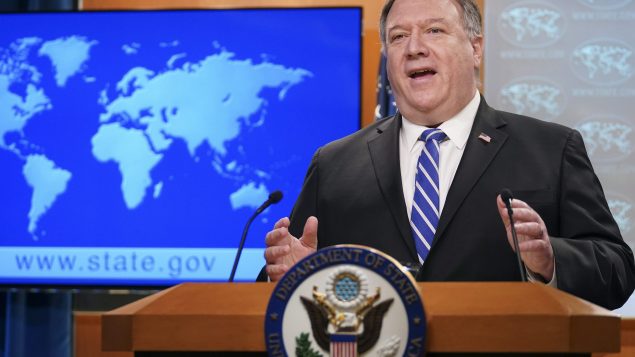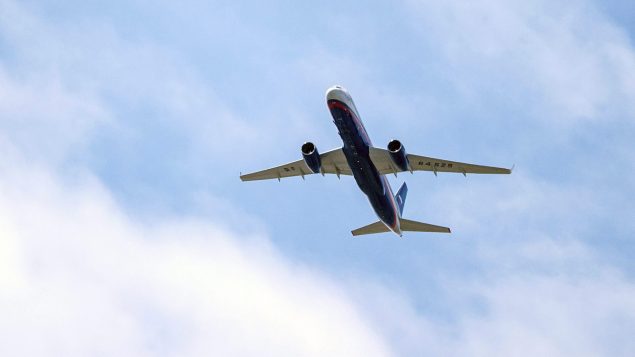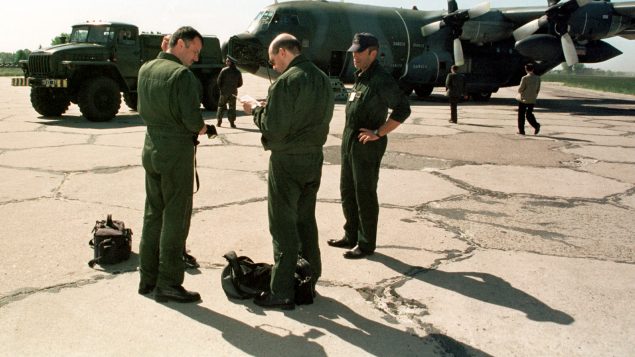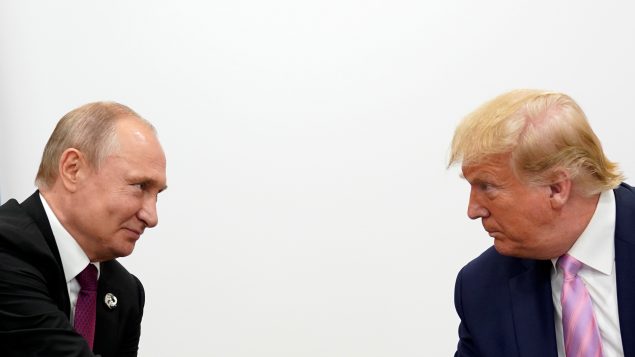Canada and Hungary will co-host a virtual conference of signatories to the Open Skies Treaty on July 6 to discuss the pending U.S. withdrawal from an international accord designed to build trust and prevent wars, say officials at Global Affairs Canada.
A U.S. State Department spokesperson told Radio Canada International on Wednesday that the United States will be present at the virtual conference held out of Vienna, and “will submit a response.”
The Trump administration notified international partners on May 21 that in six months it will be pulling out of the treaty, which permits member nations to conduct observation flights over each other’s territory. The administration said “it has become abundantly clear that it is no longer in America’s interest” to remain a party to the agreement.

Secretary of State Mike Pompeo speaks about the coronavirus during news conference at the State Department in Washington on Wednesday, May 6, 2020. (Kevin Lamarque/Pool Photo via AP)
“At its core, the treaty was designed to provide all signatories an increased level of transparency and mutual understanding and cooperation, regardless of their size,” said Secretary of State Mike Pompeo as he announced Washington’s plan to withdraw.
“Russia’s implementation and violation of Open Skies, however, has undermined this central confidence-building function of the treaty and has, in fact, fuelled distrust and threats to our national security, making continued U.S. participation untenable.”
The U.S. may reconsider its withdrawal “should Russia return to full compliance with the treaty,” Pompeo added.
‘An ultimatum’
Russia decried the U.S. withdrawal as “a deplorable development for European security.”
According to a statement from the Russian Ministry of Foreign Affairs, Moscow sees Washington’s move “as an ultimatum rather than a foundation for discussion.”
The treaty, which was signed in 1992 and came into effect in 2002, permits each of the 34 treaty members to conduct short-notice, unarmed reconnaissance flights over the entire territories of other treaty members to collect data on military forces and activities.

A Russian Air Force Tu-214 flies over Offutt Air Force Base, Friday, April 26, 2019, in Omaha, Neb. The flight is allowed as part of the Open Skies Treaty. The U.S. has announced its intention to withdraw from the confidence-building treaty. (Chris Machian/Omaha World-Herald via AP)
Canada is one of the original signatories to the treaty and, along with Hungary, is the co-depository of the accord, meaning it shares responsibility for managing the treaty.
The treaty gives Canada the right to conduct two reconnaissance flights a year over Russia and the obligation to allow two Russian flights over Canadian territory annually, as well as transit flights by Russia en route to the U.S.
Photographic proof
Steffan Watkins, an Ottawa-based expert on open source intelligence who has filed several access to information requests on Russian and Canadian activities under the Open Skies Treaty, said the treaty gives Canada an invaluable intelligence gathering tool.
The purpose of the Open Skies Treaty is not to use secret satellites to gather information, Watkins said.
“You use certified cameras that all 34 countries have approved are all compliant with the restrictions in the treaty and everybody has agreed that they’re tamper-proof,” Watkins said.
“So, if we go over to Russia, we take a picture of an area and we say, ‘This is like a prisoner of war camp, or this is some kind of a slave labour camp,’ they can’t say, ‘Oh, no, it’s not, you’ve tampered with the picture,’ because they already agreed that that camera is absolutely tamper-proof.”

FILE PHOTO: French military pilots are preparing for the first flight in the Kiev region May 15, 2001. A French military mission arrived in Ukraine for a two-day series of observation overflights according to” The Open Skies Treaty” signed in 1992 between member states of NATO and the former Warsaw Pact. (AS/GB)
The Russians usually give Canada 72 hours’ notice before they arrive for an overflight, Watkins said. The overflights are used to detect signs that a country is preparing for war, he added.
“If say the GM plant in southern Ontario starts pumping out big green trucks, they want to notice that, they want to notice that the parking lot that used to have Chevy Cruzes or something is now empty and they’ve made space for something that is rolling off the assembly line,” Watkins said.
“And we do the same. We’re looking for signs of things being manufactured, moved, prepared, readied.”
According to the reports filed by the Canadian military after each overflight mission, there is usually a very friendly atmosphere between the members of the two militaries. Canadian military personnel are always present during the Russian overflights. They even take each other to dinners and cultural exchange outings.
“It’s very friendly, it’s a joint operation,” Watkins said. “Is there intelligence being collected? Of course, that’s what we do over there too, it’s the whole purpose. But it’s not the super-spy, nefarious thing the Americans want to make it out to be.”
The regular trips to Russia by the allied militaries also allow them to get a better sense of the state of Russia’ military, Watkins said.
A threat to Canadian sovereignty
If the treaty collapses following the U.S. withdrawal, Canada and other signatories would become even more dependent on U.S. intelligence, Watkins said.
“I think it’s probably safer for our sovereignty to have our own intelligence collection methods that don’t mesh with theirs,” he said.
Syrine Khoury, a spokesperson for Foreign Affairs Minister Francois-Philippe Champagne, said Canada views the Open Skies Treaty as a key tool of global arms control.
“We understand and share many of the U.S. concerns regarding Russian non-compliance with the Open Skies Treaty,” Khoury told Radio Canada International.
“Nonetheless, we continue to believe that if Russia returns to full compliance, the treaty could continue to serve as an important tool for promoting military transparency, building mutual confidence and reducing misunderstandings.”







For reasons beyond our control, and for an undetermined period of time, our comment section is now closed. However, our social networks remain open to your contributions.